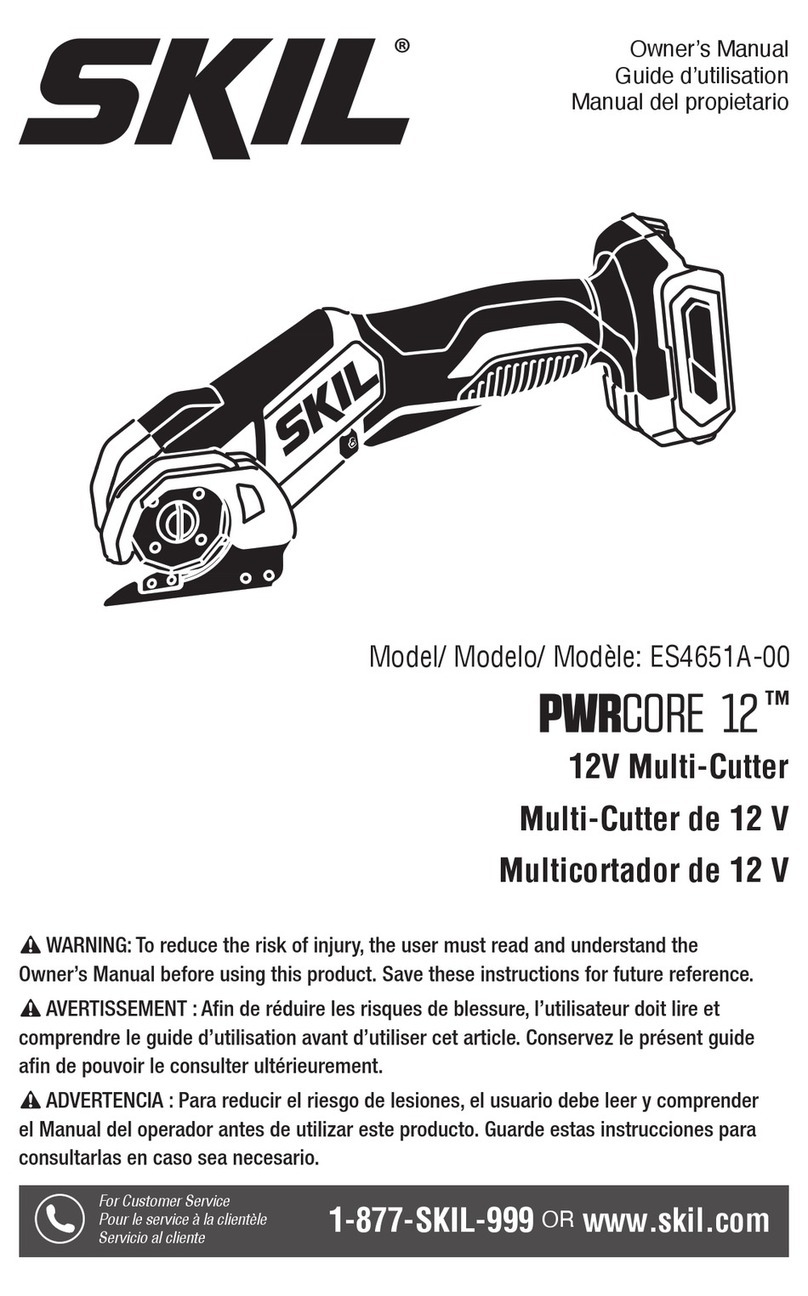
5
e) Maintain power tools. Check for misalign-
ment or binding of moving parts, breakage
of parts and any other condition that may
affect the power tool’s operation. If dam-
aged, have the power tool repaired before
use. Many accidents are caused by poorly
maintained power tools.
f) Keep cutting tools sharp and clean. Properly
maintained cutting tools with sharp cutting
edges are less likely to bind and are easier to
control.
g) Use the power tool, accessories and tool
bits etc. in accordance with these instruc-
tions, taking into account the working
conditions and the work to be performed.
Use of the power tool for operations different
from those intended could result in a hazard-
ous situation.
5) Service
a) Have your power tool serviced by a
qualified repair person using only identical
replacement parts. This will ensure that the
safety of the power tool is maintained.
Safety Warnings for
Masonry Saws
Read all safety warnings, instruc-
tions, illustrations and specifica-
tions provided with this power
tool. Failure to follow all instructions
listed below may result in electric
shock, fire and/or serious injury.
▶Always use guard provided with the tool.
The guard must be securely attached to
the power tool and positioned for maxi-
mum safety, so the least amount of wheel
is exposed towards the operator. Position
yourself and bystanders away from the plane
of the rotating wheel. The guard helps to pro-
tect operator from broken wheel fragments
and accidental contact with wheel.
▶Use only diamond cut-off wheels for your
power tool. Just because an accessory can
be attached to your power tool, it does not
assure safe operation.
▶The rated speed of the accessory must be at
least equal to the maximum speed marked
on the power tool. Accessories running faster
than their rated speed can break and fly
apart.
▶Wheels must be used only for recommended
applications. For example: do not grind with
the side of cut-off wheel. Abrasive cutoff
wheels are intended for peripheral grinding,
side forces applied to these wheels may cause
them to shatter.
▶Always use undamaged wheel flanges that
are of correct diameter for your selected
wheel. Proper wheel flanges support the
wheel thus reducing the possibility of wheel
breakage.
▶The outside diameter and the thickness of
your accessory must be within the capacity
rating of your power tool. Incorrectly sized
accessories cannot be adequately guarded or
controlled.
▶The arbour size of wheels and flanges must
properly fit the spindle of the power tool.
Wheels and flanges with arbour holes that
do not match the mounting hardware of the
power tool will run out of balance, vibrate
excessively and may cause loss of control.
▶Do not use damaged wheels. Before each
use, inspect the wheels for chips and cracks.
If power tool or wheel is dropped, inspect
for damage or install an undamaged wheel.
After inspecting and installing the wheel,
position yourself and bystanders away from
the plane of the rotating wheel and run the
power tool at maximum no load speed for
one minute. Damaged wheels will normally
break apart during this test time.
▶Wear personal protective equipment. De-
pending on application, use face shield, safe-
ty goggles or safety glasses. As appropriate,
wear dust mask, hearing protectors, gloves
and workshop apron capable of stopping
small abrasive or workpiece fragments. The
eye protection must be capable of stopping
flying debris generated by various operations.
The dust mask or respirator must be capable
of filtrating particles generated by your opera-
tion. Prolonged exposure to high intensity
noise may cause hearing loss.
▶Keep bystanders a safe distance away from
work area. Anyone entering the work area
must wear personal protective equipment.
Fragments of workpiece or of a broken acces-
sory may fly away and cause injury beyond
immediate area of operation.
▶Hold the power tool only by the insulated
gripping surfaces when performing an op-
eration where the cutting tool may contact
hidden wiring or its own cord. Contact with
a “live” wire will also make exposed metal
parts of the power tool “live” and shock the
operator.
▶Position the cord clear of the spinning ac-
cessory. If you lose control of the power tool,
the cord may be cut or snagged and your
hand or arm may be pulled into the spinning
accessory.
▶Never lay the power tool down until the
accessory has come to a complete stop. The
spinning accessory may grab the surface and
pull the power tool out of your control.
▶Do not run the power tool while carrying































